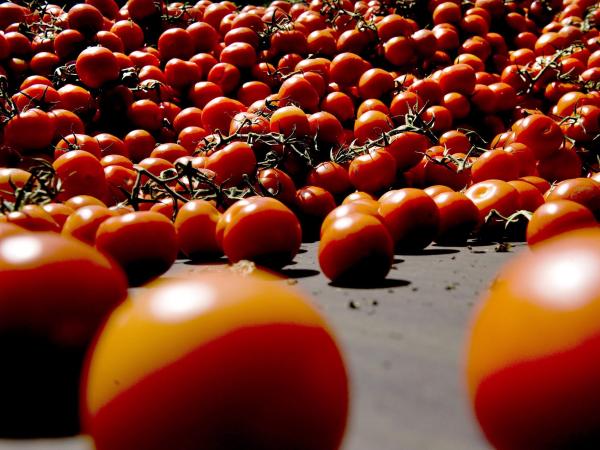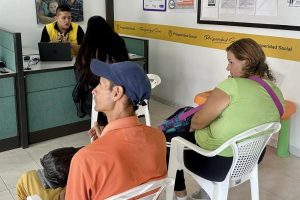Colombia, a nation with an agricultural vocation had a production of 34.27 million foods for 2021. However, the international discussion has been talking about the amount of food that is wasted in the world and in this case in the country.
(Read: The Colombian peso, among the most devalued currencies in Latin America).
Within the framework of the celebration of the International Day of Awareness of Food Loss and Waste, the FAO estimated that by 2021 the number of people affected by hunger in the world increased to 828 million, which represents an increase of 46 million compared to the figure presented for 2020.
Likewise, the organization said that around 14% of food production worldwide, a figure that is valued at US $ 400,000 million annually, continues to be lost after harvesting. Similarly, the United Nations Environment Program (UNEP) indicated in its report on the Food Waste Index, that at least 17% of these products end up being wasted in retail and by consumerss, especially in homes.
For his part, QU Dongyu, Director General of the FAO, stated that “sLet’s continue to work together efficiently, effectively and consistently to raise awareness and end food loss and waste. For a healthy population and planet”.
The food waste also comes as the UK records its driest July since 1935, further affecting output.
However, the figures for the country are not completely encouraging, according to the National Administrative Department of Statistics (Dane), by 2021 the percentage of households that throw away or throw away vegetables in the country indicates that Chocó scores the list with waste of 10.5% of vegetablesthe department of Nariño continued with 7.8%, a figure that continues to decline with Risaralda that presented 7.3%.
(See: The dangers that the tax reform would represent for the country).
For its part, Atlántico showed vegetable waste in 6.6%, while for In the case of San Andrés, the figure was 6.2%. Bogotá presented losses in this food for 5.8%, while Boyacá reached 5.3%. Following these departments are Magdalena with waste at 5.2%, Valle with 4.9% and Caldas with 4.8%.
According to the institution, the national total presented waste by 4.5% and below this figure are followed by the departments of Quindío with 4.5%, Antioquia with losses of 4.4%, Cundinamarca with 4.4%, Putumayo, Cauca and Caquetá with 4.0%, 3.5% and 3.4% respectively.
Likewise, according to the Dane report, in the departments with the lowest percentage of vegetable waste Guainía is located with 0.7%, La Guajira reached 1.1%, while Vaupés presented waste by 1.2%. In the case of Santander, the figure was 1.3%, while Vichada increased by 1.4%. Regarding Meta, Córdoba and Huila, waste was 1.4%, 1.8% and 1.9 for each one.
Now, looking at the food groups that are most wasted, the entity indicated that vegetables tops the list with 4.5%, followed by fruits that presented a percentage of 4.1%. In turn, they are followed by tubers and bananas with 1.9%, while milk, cheese and dairy products presented figures of 1.4%, as well as rice, pasta and other cereals that obtained the same percentage 1.4%. . With regard to meat, chicken and fish, waste reached 1.3%, in the same way as grains, beans, lentils, chickpeas, among others, which also reached 1.3%. The food with less waste was the egg with 0.7%.
Among other data, according to the Food Bank of Colombia, it is worth noting that the ÍAgricultural Self-sufficiency Index is 74.9%, Therefore, it is important to “reduce food loss and waste, which according to the 2016 DNP report, 34% of the food available for Colombian consumption is wasted per year, that is, about 9.76 million tons. ”, they stated.
Matías Troncar, manager of Frubana Colombia, said that of the 7,000 tons of food that the company moves per monthonly 1% is wasted. “Reducing food waste is a joint effort of all the actors in the food chain, governments and people. We are investing in technologies that allow us to make visible that there are tools to generate positive impacts”, she assured.
(Read: Cotton production increases 123% in the country).
Measures to mitigate food waste
With data from the Special Administrative Unit for Public Services (Uaesp), in Bogotá, 1,228,000 tons of food are lost per yearwhich indicates that at least 12.58% of all food is lost in the country.
On the other hand, the FAO called for action so that “public and private entities throughout the agri-food system act now to measure and reduce food loss and waste and change consumer behavior” and so on. mitigate waste.
Similarly, Inger Andersen, Executive Director of UNEP said, “halving food waste is an important part of efforts to address the urgent climate and food crises.”
Diana K. Rodriguez T.












